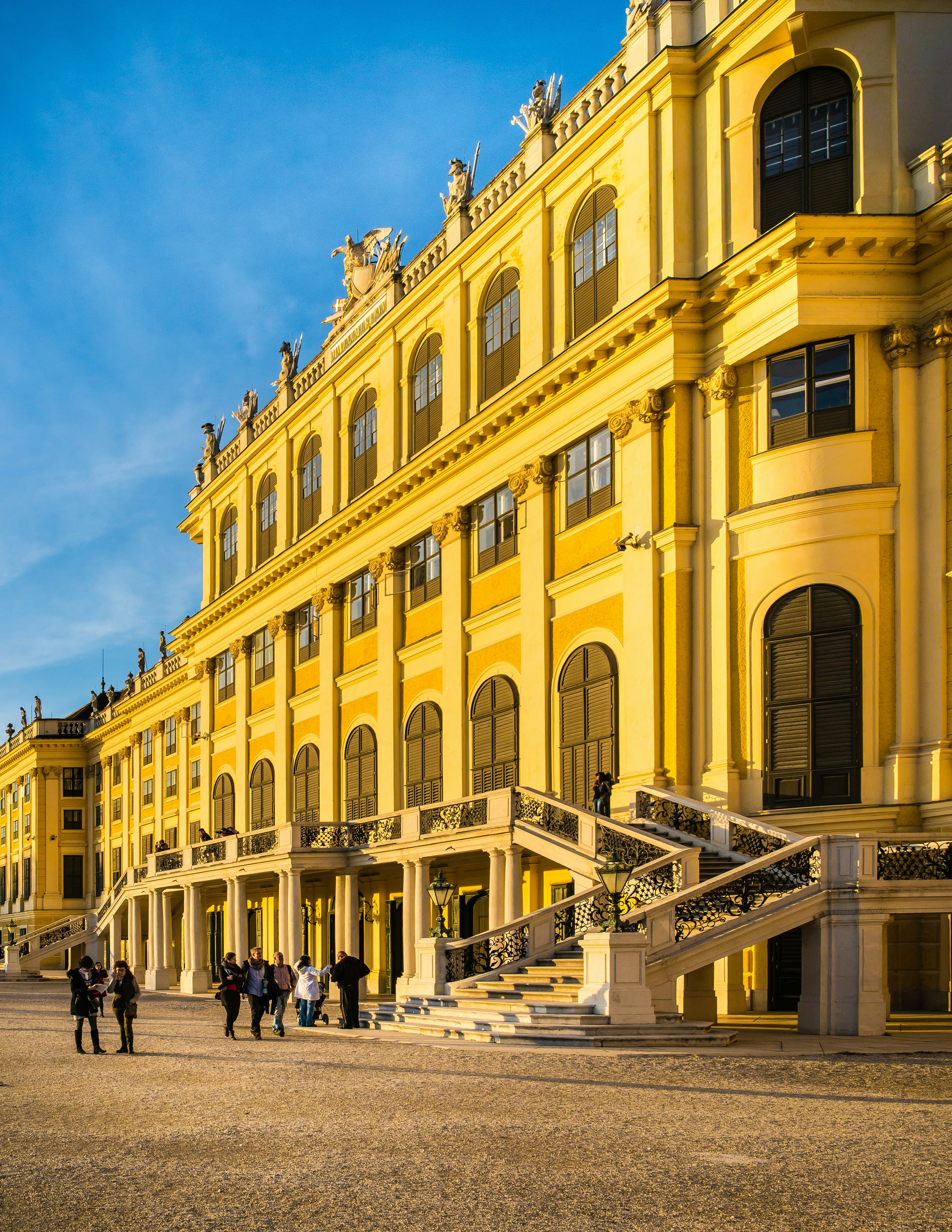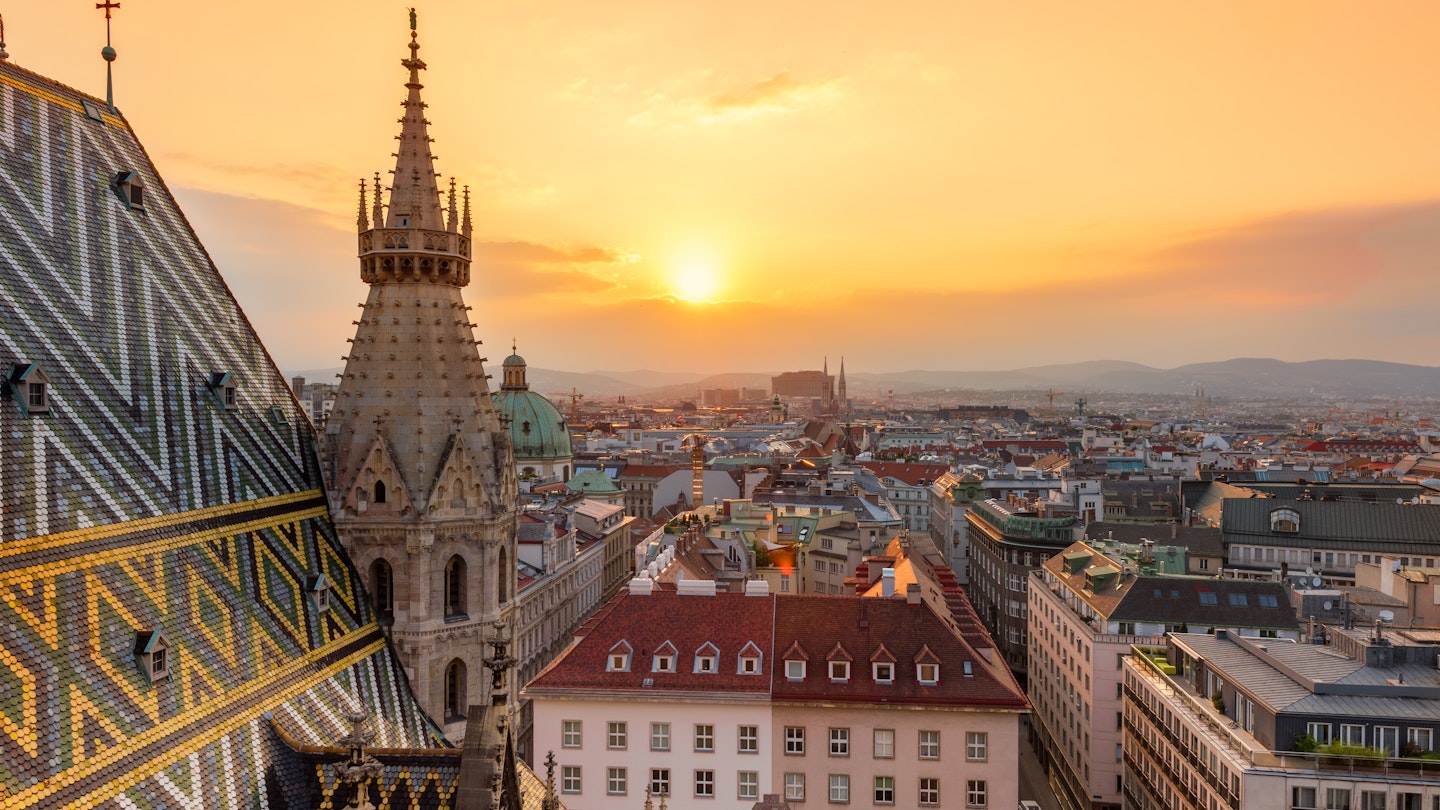Explore Vienna’s Beautiful Parks: A Guide to Outdoor Bliss
Fringed by enchanting woods and vineyards, Vienna is renowned as one of the greenest cities in the world. Half of the entire Austrian capital is dedicated to green espaces, with some spectacular places to explore – over a quarter of its 2000 parks are former imperial parks and gardens.
Embrace Vienna’s outdoor life with our guide to the city’s greatest parks.

Prater
Beloved by generations of Viennese, the woodlands and meadows of the Prater sprawl between the Donaukanal (Danube Canal) and the Donau (Danube). This former river basin was once Habsburg monarchy hunting grounds and is now central Vienna’s most popular park for walking, cycling, and summertime picnicking.
Stately chestnut trees stand sentinel along the Hauptallee avenue, which leads to the Lusthaus, a 16th-century hunting lodge transformed for imperial festivities in the late 18th century, now featuring a cafe and restaurant serving Austrian classics.
Children can enjoy the city’s largest playground and the quaint Liliputbahn miniature railway. The highlight is the 65m-high (213ft) Riesenrad (Ferris wheel), built in 1897 to commemorate Emperor Franz Josef I’s Golden Jubilee, featuring distinctive red gondolas overlooking the Würstelprater amusement park’s thrilling rides.
Stadtpark
On sunny days, city workers flock to the peaceful Stadtpark (City Park). Straddling the Wien River, its paths meander past tranquil duck ponds shaded by willow trees.
Statues adorn the park, featuring a shimmering gold monument of Johann Strauss the Younger (composer of the waltzes The Blue Danube and Tales from the Vienna Woods) skillfully playing the violin. The park’s Renaissance Kursalon hosts evening concerts featuring the stirring music of Mozart and Strauss.
Burggarten
Situated behind the splendid Hofburg palace complex, the verdant Burggarten (Castle Garden) features a white marble statue of Mozart atop a pedestal, accompanied by reliefs depicting his childhood and work.
The Habsburgs’ beautiful art nouveau greenhouses from 1901 now house the Schmetterlinghaus (Butterfly House), exhibiting hundreds of vibrant winged creatures among tropical plants, as well as the Palmenhaus bar with a park-facing terrace.
Volksgarten
Similar to the nearby Burggarten, the Volksgarten (People’s Park) was also part of the Hofburg. After fortifications here fell to Napoleon, it became the city’s first public park in 1823. It is especially vibrant in late spring and summer, when its 3000 rose bushes blossom to fragrant life, and during evenings filled with dancing at its ClubDiskothek, held in a 19th-century glass pavilion.

Schloss Schönbrunn
The Habsburgs’ sun-yellow summer palace is a must-visit for its sublime grounds alone. Schloss Schönbrunn took its name from the Schöner Brunnen fountain, which now flows through a nymph’s stone pitcher near faux Roman ruins. Other follies include the Greek mythology–themed Neptunbrunnen and Irrgarten hedge maze. Overlooking the palace and city skyline is the arcaded triumphal-arch-style viewpoint, the aptly named Gloriette.
Within the Schlosspark (Palace Park), you’ll discover the Palmenhaus (Palm House; a replica of the famous greenhouse in London’s Kew Gardens), Wüstenhaus (Desert House), and giant pandas, polar bears, elephants, giraffes, and more at the 1752-established Schönbrunn Tiergarten – the world’s oldest continually operating zoo.
Lainzer Tiergarten
Thickly wooded with beech and oak, Lainzer Tiergarten is the wildest of Vienna’s parks. This area is not a traditional “zoo,” rather it refers to free-roaming wildlife including wild boars, deer, and birdlife, such as jackhammering woodpeckers, in this former imperial hunting ground. The magic continues in winter, transforming it into a beautiful skiing location far from the bustling Christmas market crowds.

Schloss Belvedere
More imperial garden grandeur awaits at the Schloss Belvedere. Between the two Belvedere palaces, majestic three-tiered baroque gardens are a vision of splashing fountains and meticulously manicured topiary.
In the Belvedere Schlossgarten, the Alpengarten (Alpine Garden) boasts a prized collection of Japanese bonsai and breathtaking rhododendron displays. To the south, the rambling, English-style Schweizergarten (Swiss Garden) houses the Belvedere 21 contemporary-art pavilion.
Botanischer Garten
Adjoining the Belvedere Schlossgarten, Vienna’s captivating Botanischer Garten (Botanic Garden) was originally a pharmaceutical garden established by Empress Maria Theresia in the 18th century for the University of Vienna’s medical faculty.
Now part of the university’s Institute of Botany, it plays a vital role in research and conservation, featuring medicinal plants, rare orchids, and succulents among 11,500 species that flourish in its greenhouses, groves, and meadows.
Augarten
Vienna’s oldest baroque garden is nestled within the 1775-established Augarten, a serene place to relax on a sunny afternoon. Palais Augarten, once an imperial pleasure palace, now hosts the early-18th-century-founded Augarten porcelain factory and museum. The park’s elegant tree-lined paths and flower beds contrast starkly with reminders of Vienna’s WWII history in its two Flaktürme (flak towers).

Donauinsel and Alte Donau
During the summer months, locals head for the Donauinsel (Danube Island). This artificial island spans over 21km (13 miles), created as part of the city’s flood protection system, forming a separate arm of the river known as the Neue Donau (New Danube). This area features swimming zones with fine-gravel beaches, a climbing park, a skate park, and the world’s largest floating trampoline center, offering numerous energetic activities.
Additional options for sailing, swimming, and other water sports can be found at the landlocked Alte Donau (Old Danube), separated from the Neue Donau by a narrow stretch of land. Both locations are easily accessible from the city center via the U-Bahn (underground rail).
Wienerwald
Wrapping around Vienna’s western edge, the Wienerwald (Vienna Woods) spreads across over 1000 sq km (386 sq miles). The woods are dotted with vineyards, charming Heurigen (rustic wine taverns), and abundant mountain biking and hiking trails leading up into the hills.




